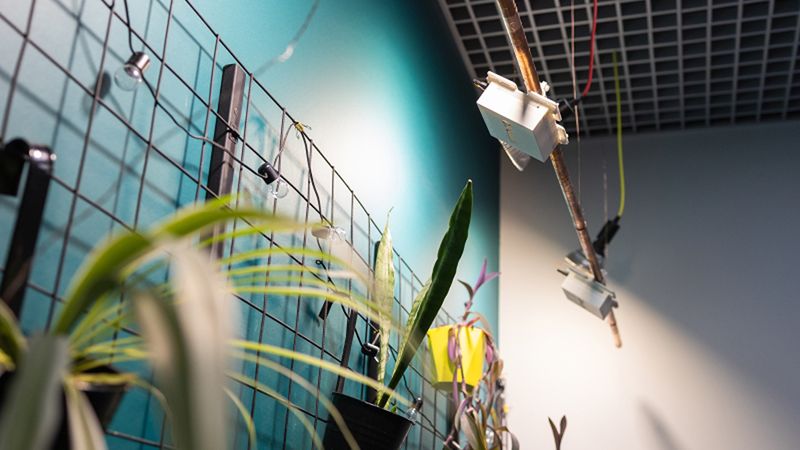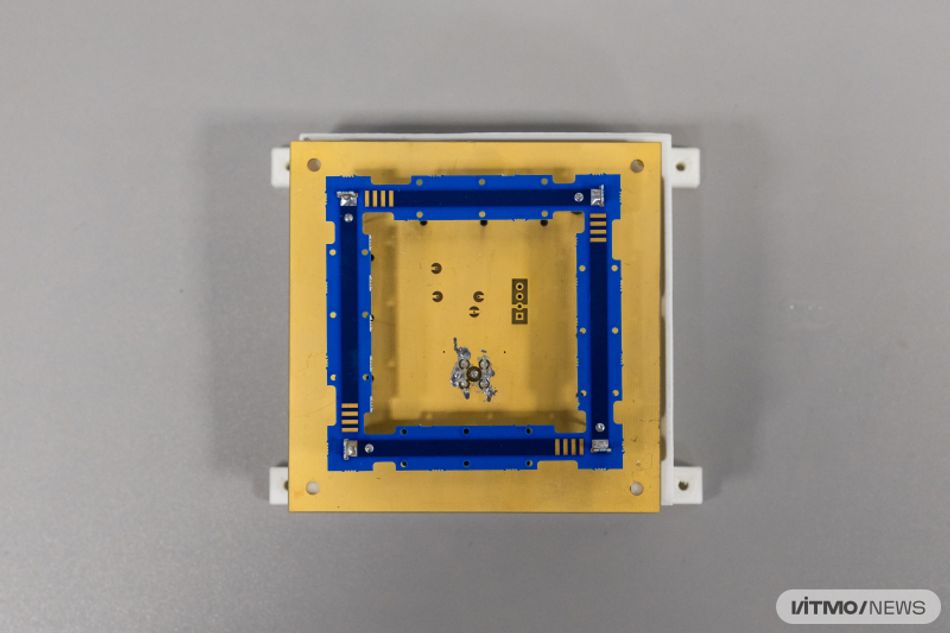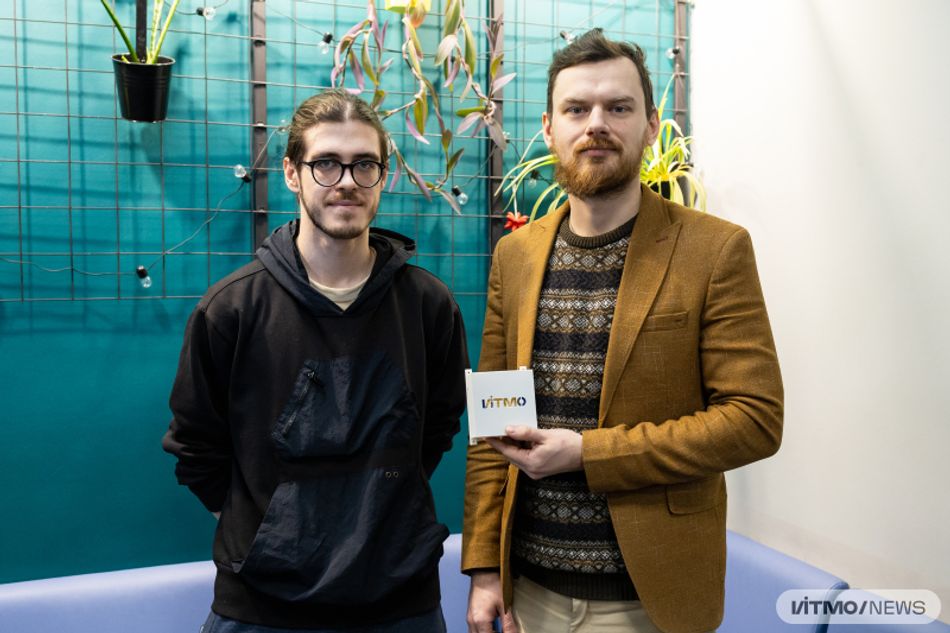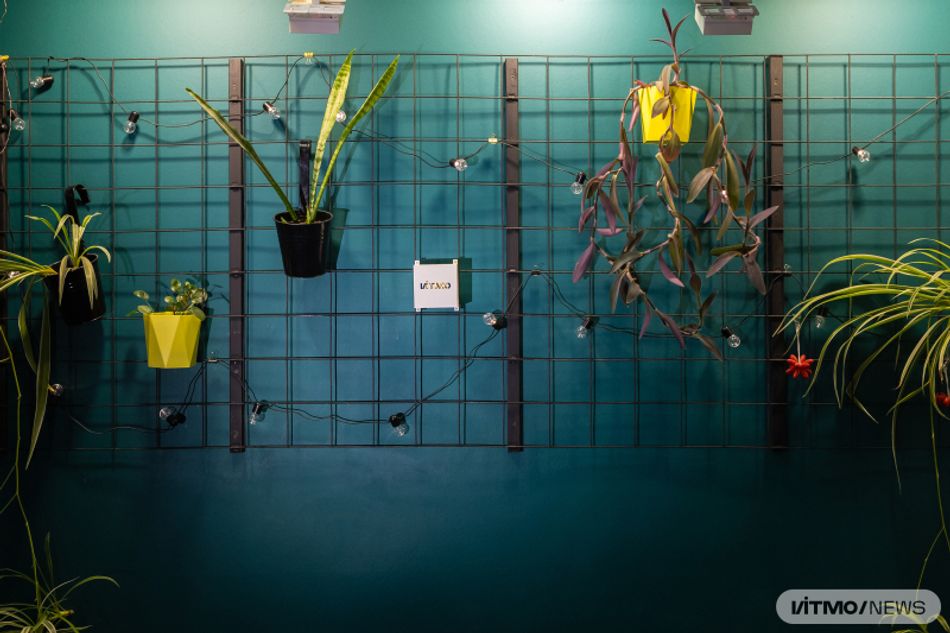First Russian Wireless Charging Technology for IoT and Smart Homes Developed at ITMO
Researchers at ITMO University rolled out their far-field wireless technology for low-power devices such as Internet of Things (IoT) and smart home sensors detecting motion, temperature, humidity, and other parameters.

The transmitter within the wireless power transfer system. Photo by Dmitry Grigoryev / ITMO NEWS
This article was first published on
news.itmo.ruResearchers at ITMO University rolled out their far-field wireless technology for low-power devices such as Internet of Things (IoT) and smart home sensors detecting motion, temperature, humidity, and other parameters. They generally run on batteries or wires. The technology is the first in Russia to enable wireless charging of gadgets within a distance of up to a few meters and beyond, while also remaining safe for humans and the environment.
Many IoT and smart home devices, such as alarms, need wires to connect to their power source, whereas smart sensors use batteries that must be regularly replaced. One solution to the problem can be wireless power technology, akin to wireless chargers for smartphones, with a special charging stand and a built-in transmitting coil. The stand generates an alternating magnetic field, and the coil inside it converts the field back into electric current. However, the technology can only function if the transmitting and receiving coils are located in close proximity, which makes it inapplicable for smart homes.
A group of scientists from ITMO’s Faculty of Physics demonstrated the first Russian technology that can charge IoT and smart home devices wirelessly at a distance of up to several meters. The technology has a few analogs in the world – but none in Russia so far.
“The field we’re working in, that is wireless charging over long distances, is promising and rapidly growing. Unlike its analogs, our technology allows the transmitter and receiver to be located anywhere from tens to hundreds of meters away from one another, depending on the task. Energy in this system is transmitted using propagating electromagnetic waves,” explains Polina Kapitanova, a senior researcher at ITMO's Faculty of Physics.
The solution consists of two small units: a transmitter and a receiver. The generator in the transmitter creates a radio frequency signal, the power of which is increased via an amplifier. A filter eliminates the reflection of electromagnetic waves at the operating frequency from the transmitting antenna back to the amplifier, as well as prevents the passage of waves outside the operating frequency range. The transmitting antenna emits waves that propagate in the air in a given direction, reach the receiver antenna, and are then converted into alternating current. A receiver rectifier converts alternating current into direct current. And, finally, the power management system accumulates energy, converts the current and voltage parameters in accordance with the type of the connected device and transmits energy to it every few seconds.
The development team includes experts from ITMO’s Faculty of Physics: Andrey Kuzmichev, Polina Terentyeva, Alexander Zolotarev, Pavel Smirnov, Sutanu Chatterjee, Eugene Koreshin, and Polina Kapitanova.
“The transmitter emits up to 1.5W, which is a safe amount of energy for people and the environment as stated in the sanitary and global standards developed by the world’s largest community of electronics engineers, IEEE. The energy transmitted by the electromagnetic waves is distributed within a large working area, some portion of which dissipates in the air, causing only several milliwatts to reach the receiver in the end. This amount is enough to charge a few low-powered devices (or sensors) located within the working area of one transmitter, which equals to 0.8х1.2m,” concludes Andrey Kuzmichev, a laboratory assistant at ITMO’s Faculty of Physics.
The developed device can be widely used for smart home systems, as an electromagnetic energy transmitter installed inside a ceiling can ensure a steady supply of energy to smart sensors on walls. Moreover, the technology can be easily scaled up – by simply placing an unlimited number of transmitters along the wall or within the entire area of the room.
“The technology’s scalability is especially important for industrial needs. For instance, storage facilities today are highly automated and hence require monitoring of varied parameters, from positioning of cargo to air temperature and humidity. Their configuration also changes dynamically, which makes powering each sensor complicated and changing batteries – sometimes even impossible. What we offer is a module-based system that allows us to create areas within which many low-powered sensors can be charged wirelessly,” notes Eugene Koreshin, a junior researcher at ITMO’s Faculty of Physics.
The team is planning to adapt the technology and propose new solutions for industrial needs. For example, the operating area, the distance between the transmitter and the receiver, as well as the emitted power can be optimized to meet desired technological requirements.


